Visiting Farkaslaka And Áron Tamási's Memorial Grave
Farkaslaka or Lupeni in Romanian, is a small village in Hargita (Harghita) county. According to data from 2011 (yeah, we're in the stone age still), the village has 1850 inhabitants and nothing special, if you don't count Áron Tamási's memorial grave.

Áron Tamási (born: János Tamás; 20 September 1897 – 26 May 1966) was a Hungarian writer. He became well known in his native region of Transylvania and in Hungary for his stories written in his original Székely style. source
At the time of our visit, there were only a handful of people visiting the place, but that's not always the case. Locals knew how to make the most of the situation.
Farkaslaka or Lupeni is next to Korond (Corund), where those lovely ceramics are sold. That's place that is always visited by tour busses from abroad as well as tourists love to buy souvenirs and the pottery they make is famous not only in Romania but abroad as well. If you don't know what I'm talking about, you can check one of my previous posts.
When putting together a rout for the tourist, these two places are usually considered and when busses stop here one after another, there's an opportunity.
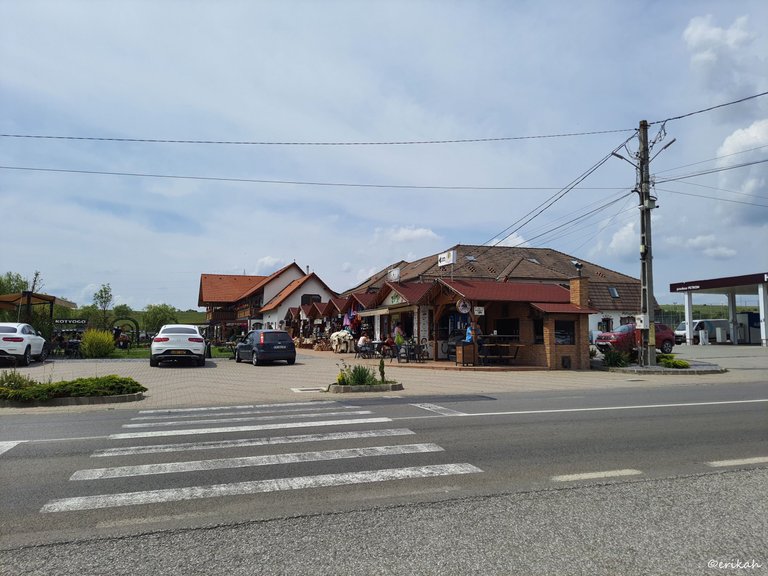
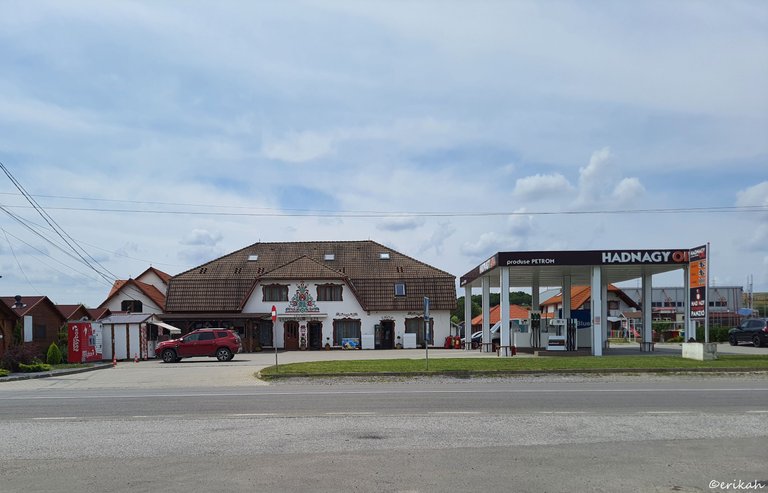
Across the street, there's an inn, a restaurant, souvenir shop and a petrol station. This is a huge opportunity for locals.

But let's get back to Áron Tamási's memorial grave. There's a nice, carved wooden gate you have to cross. This is specific to the region and I think it can't be missing.

Unfortunately I have no idea what the writing means as it's the old Székely runic writing and I can't read it.

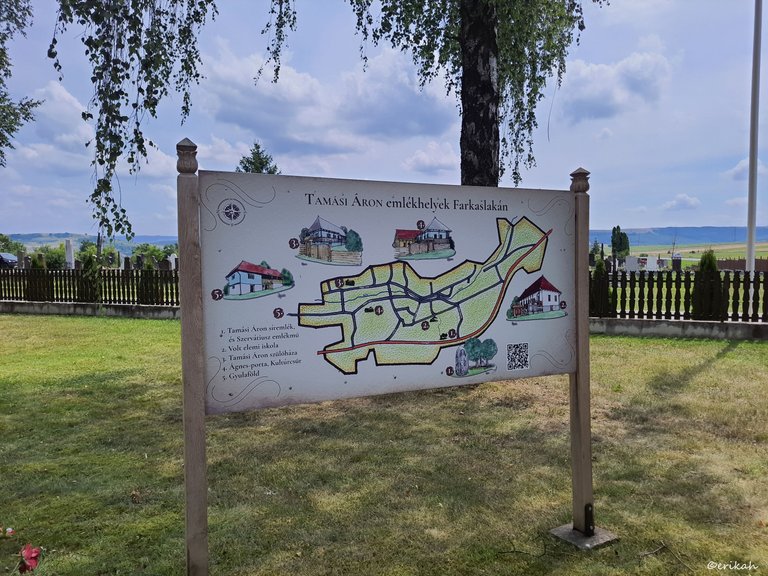
Turns out, there's the old elementary school to see, as well as Áron Tamási's house, where he was born and another house.

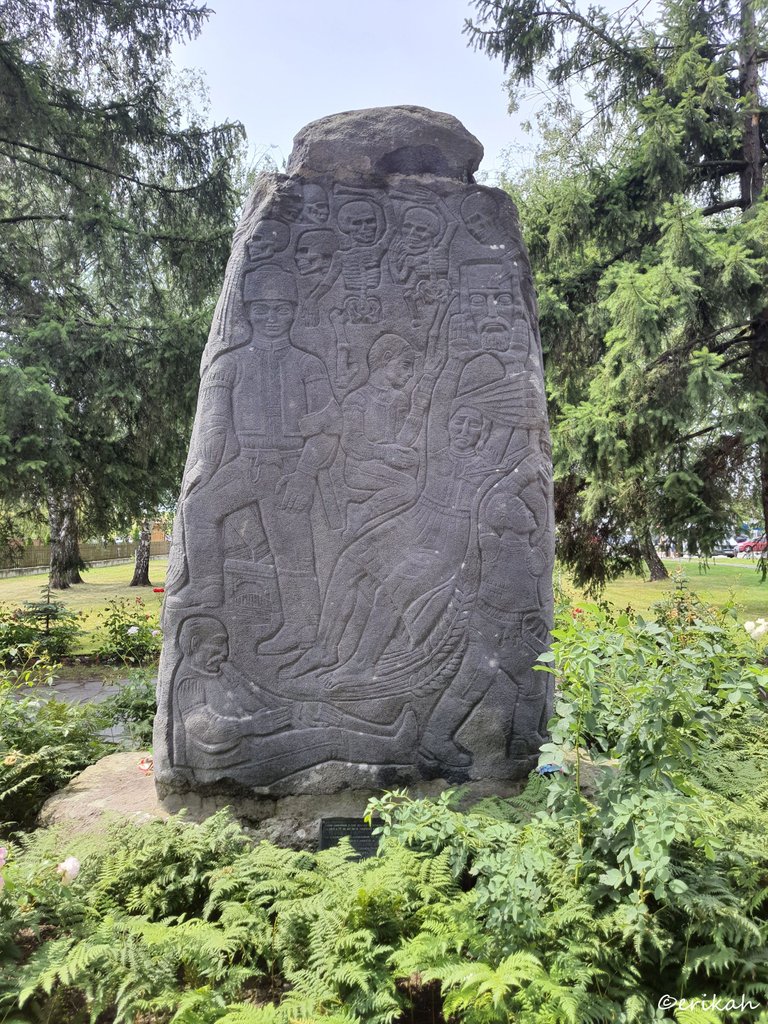
This is a memorial stone made by father and son, Jenő Szervátiusz and Tibor Szervátiusz, inaugurated in 1972. It's interesting to see the well known elements of the region. The middle part symbolizes the kopjafa, which is a carved wooden pole used instead of headstones. On the bottom left, a small kid with a dog, playing the flute, which was a common scene when the writer was a kid. Back in those days that's what kids did. The man on the left is wearing the traditional shirt with the Hungarian knot. The sun and the moon are also commonly used in fold art.
The back of the stone is a bit of a puzzle, but I suppose it symbolizes the struggle and the fight the the Szeklers had to go through over the centuries.
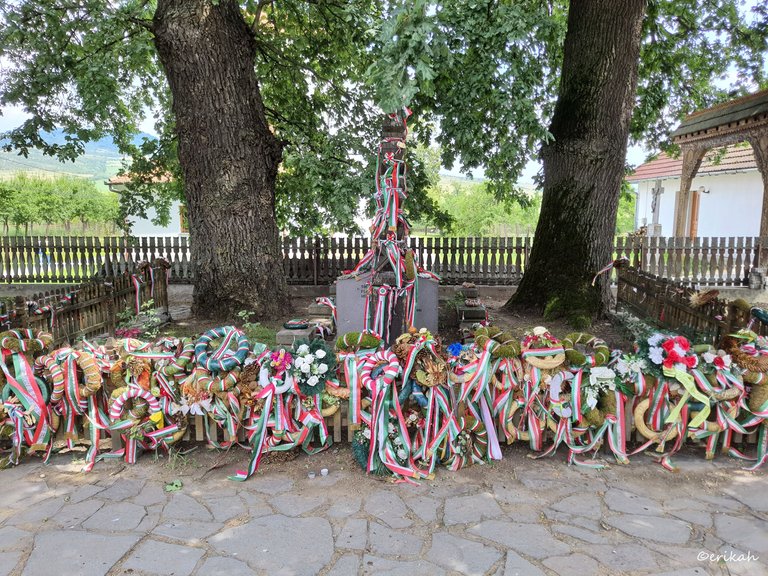
There were wreaths everywhere, brought by those who came to visit the grave.
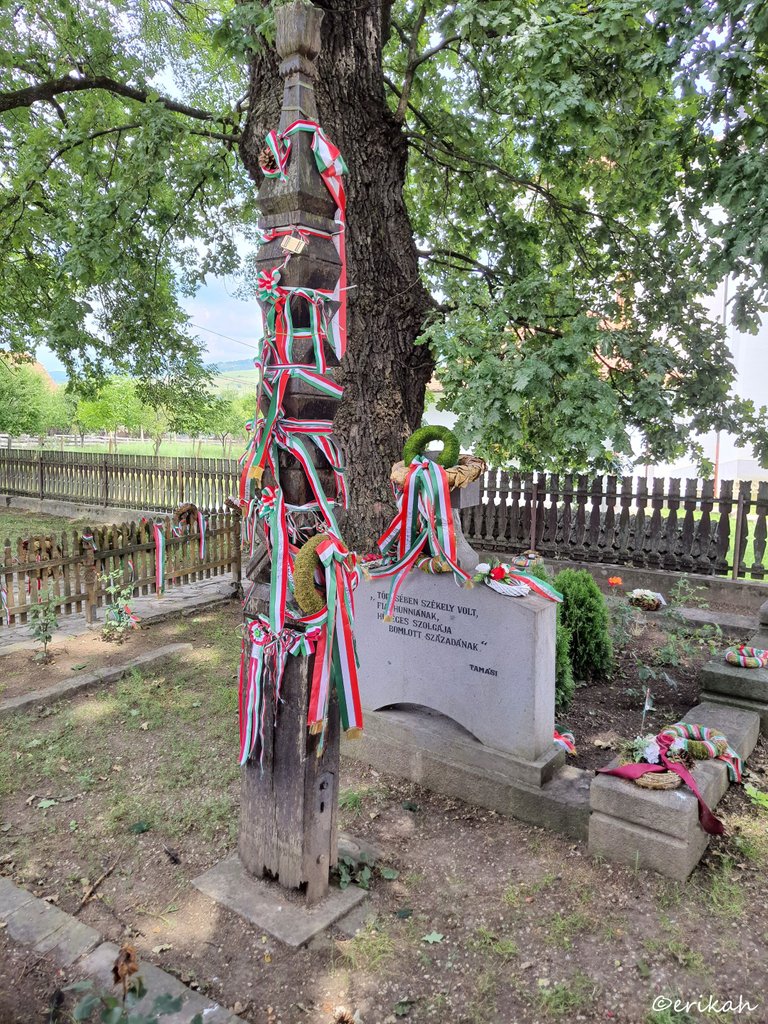
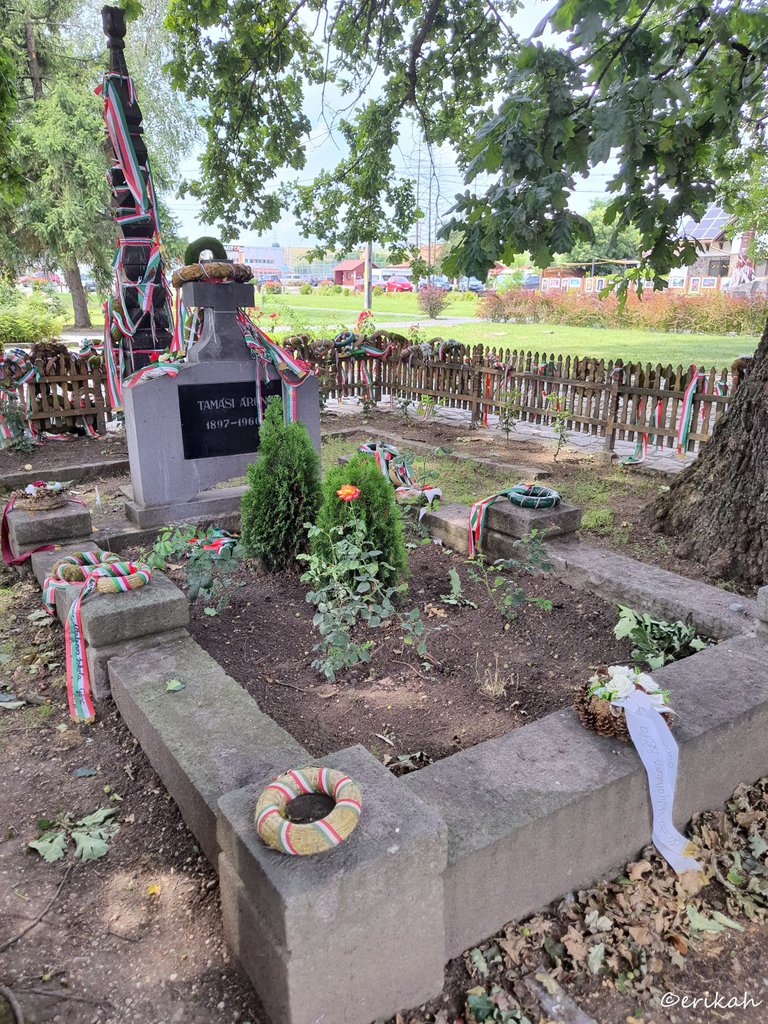
This is the kopjafa, the carved wooden pole used instead of a headstone. It's very common in that area. However, Áron Tamási has a headstone as well.
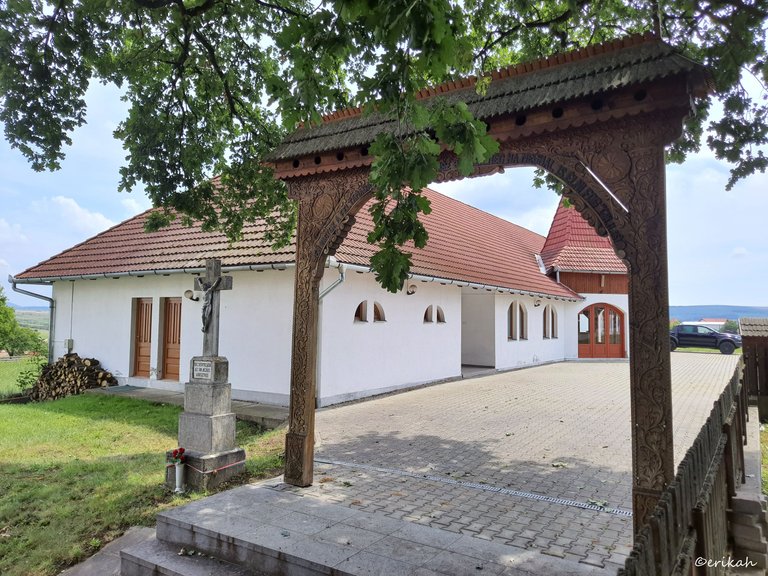
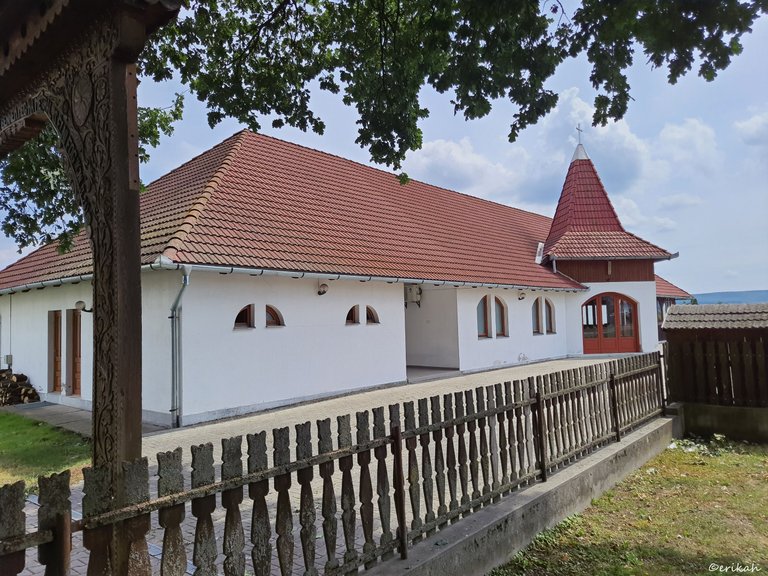
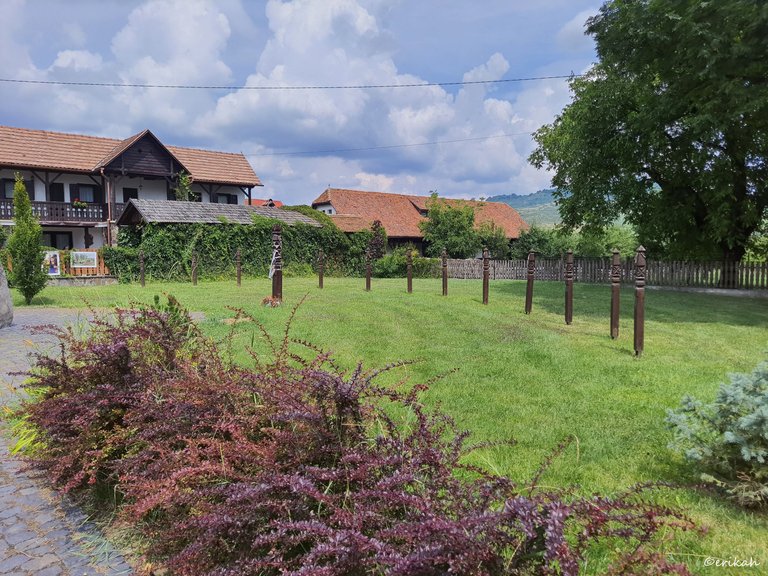
More Kopjafa, to commemorate the 13 martyrs of Arad.
The martyrs of Arad are the thirteen Hungarian army officers (12 generals and 1 colonel) who were executed in Arad after the suppression of the 1848-49 revolution and war of independence due to their role in it. Although the number of these army officers is sixteen, the national memory still primarily refers to the thirteen army officers executed on October 6, 1849 as such, often using the names thirteen martyrs of Arad and thirteen of Arad. source
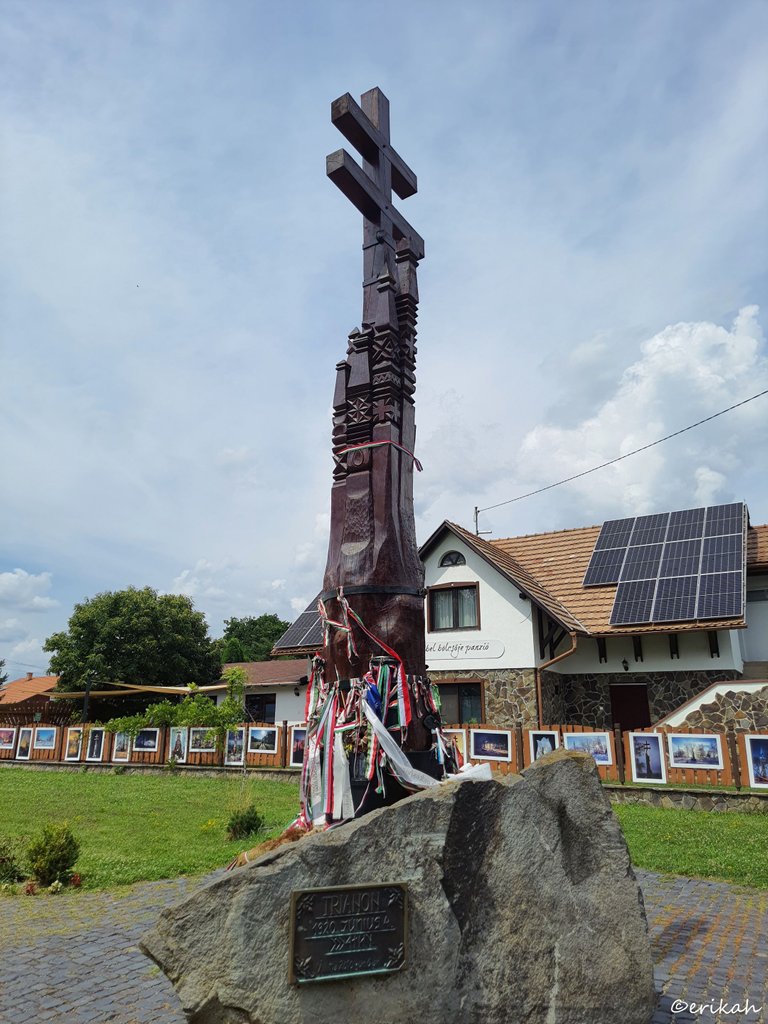
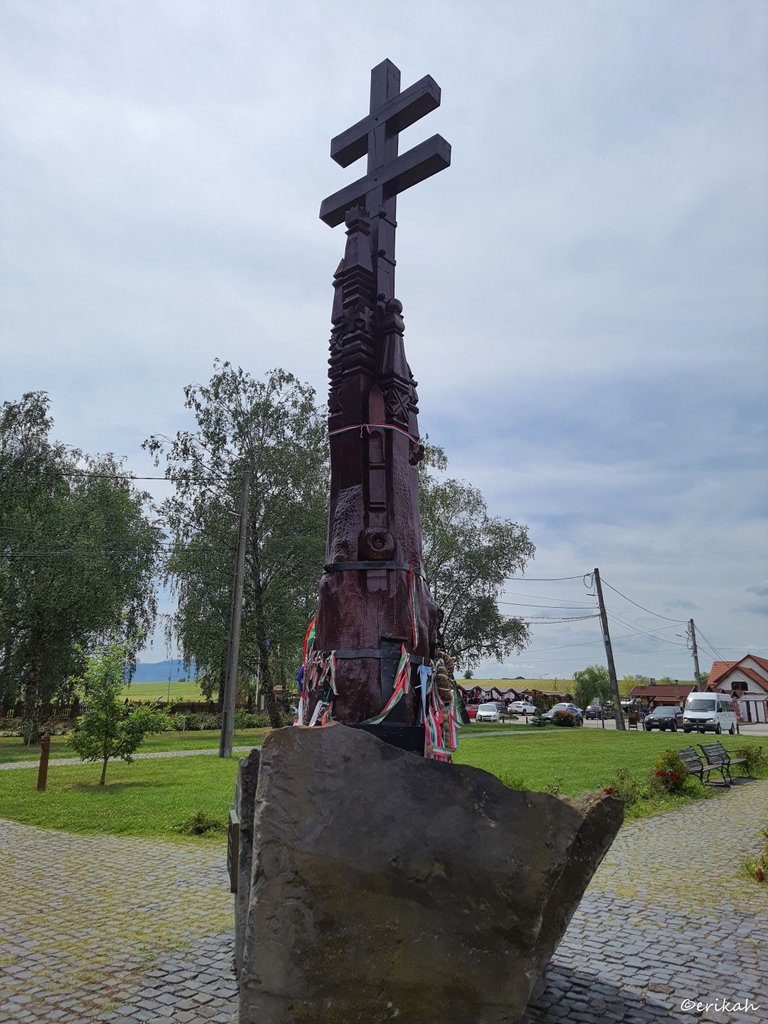
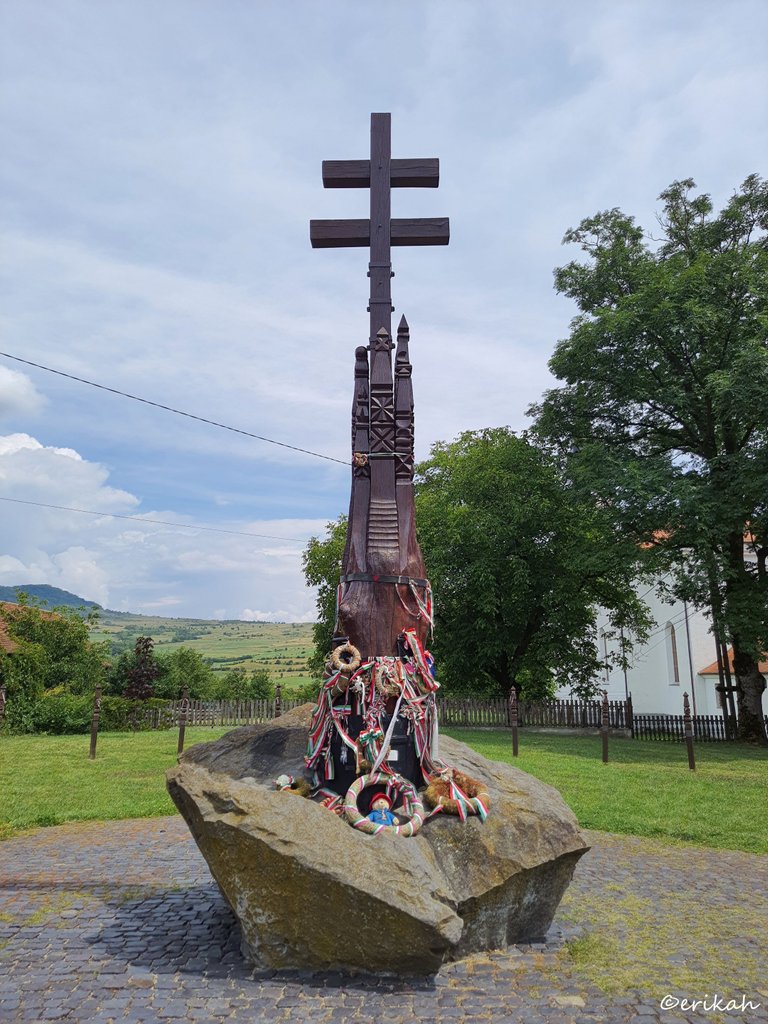
And this is the Trianon monument, inaugurated in 2010.
The Treaty of Trianon (French: Traité de Trianon; Hungarian: Trianoni békeszerződés; Italian: Trattato del Trianon; Romanian: Tratatul de la Trianon) often referred to as the Peace Dictate of Trianon or Dictate of Trianon in Hungary, was prepared at the Paris Peace Conference and was signed in the Grand Trianon château in Versailles on 4 June 1920. It formally ended World War I between most of the Allies of World War I and the Kingdom of Hungary. source
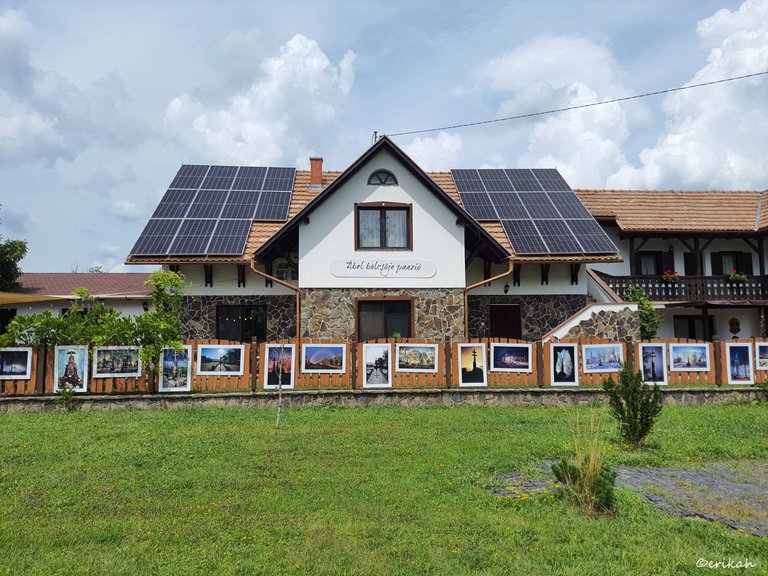
Next door there was an inn, called Abel's cradle. Abel is a character of Áron Tamás, trilogy by the way and I suppose the name came from there.
As you can see, there was an open air photo exhibition as well, photos were hanging on the fence, but there was no time for a proper photo shoot.

If you're a newbie, you may want to check out these guides:
- Communities Explained - Newbie Guide
- Cross Posting And Reposting Explained, Using PeakD
- Hive Is Not For Me
- How To Pump Your Reputation Fast - Newbie Guide
- Tips And Tricks & Useful Hive Tools For Newbies
- More Useful Tools On Hive - Newbie Guide
- Community List And Why It Is Important To Post In The Right Community
- Witnesses And Proposals Explained - Newbie Guide
- To Stake, Or Not To Stake - Newbie Guide
- Tags And Tagging - Newbie Guide
- Newbie Expectations And Reality

Congratulations, your post has been added to Pinmapple! 🎉🥳🍍
Did you know you have your own profile map?
And every post has their own map too!
Want to have your post on the map too?
Been a while I came across your post
I have missed you tho
Those are lovely pictures
Love you
Been a while I came across your post
I have missed you tho
Those are lovely pictures
Love you
I've been active all the time :)
I am always happy anytime I see you because you because it was your guide that got me this far
Just want to say thank you again
Thank you and I'm really glad to hear that. Many come and try all kinds of tricks and shortcuts, not many listen though.
I wish you all the best and good luck!
oh, rovásírás 😍
I can't read it either, but I guess with a bit (or a lot hahaha) of training we could learn it one day!
Boldog Szent István Napot! 😉
Lol, imagine, it could be our secret language, no one would understand a word we're saying 🤣
Köszönöm szépen, neked is Boldog Szent István Napot! 😀🎊🥂🍾
Maybe neither we would understand a word 😂
Köszi 😇🥂🍾
Well, I think it must be a simple language but who knows 😁
Tuti hogy könnyű!
😜
[《</\《]>=+#
😂
Oh, well, I missed the lesson where we had to learn what you said...
🤣
It was a wonderful village tour, The historical and cultural richness of Farkaslaka or Lupeni is really impressive. The fact that Áron Tamási's mausoleum is surrounded by a wooden gate, typical of the region, I think reflects the identity of the village. Korond's reputation for its ceramics is also very interesting. I loved the photo shoots, it always encourages me to read more about historical places when I see photographs of them in the text. By the way, the open air photography exhibition seems to emphasize the aesthetic aspect of the village.🏞️🏛️
As I was able to notice, the photo exhibition was about the area. Most likely the mountains and the important point one need to see when visiting. In any case, it's a place to visit if one is in the area.
It is beautiful to be able to observe wonderful photos and get to know emblematic sites of other cultures. thanks for this friend @erikah Have a nice day 🌞🌈🤗
It is indeed a nice experience. Thanks for stopping by.
Hiya, @LivingUKTaiwan here, just swinging by to let you know that this post made it into our Honorable Mentions in Daily Travel Digest #1973.
Your post has been manually curated by the @pinmapple team. If you like what we're doing, please drop by to check out all the rest of today's great posts and consider supporting other authors like yourself and us so we can keep the project going!
Become part of our travel community:
Thank you!
Amazing how history is preserved in places like these. Yeah would be nice to know if it can be translated to know what it means.
Most likely it can, but who has the time to study and try 😀
Hi @erikah! It has been a few days since I dropped in, sorry about that. I've been slacking lately. Glad I was able to make this tour with you. Are those gates specific to just Transylvania, or all of Hungary?
Hey Joe! No worries, life is keeping us busy all the time, so we do what we can.
Those gates are specific to this region, where the majority of the population is Hungarian, most specifically Székely. I don't think you can see many gates like this in Hungary. There may be a few, but it's not specific to Hungary.
Okay, I was thinking you were in the area of Transylvania. I am obviously ignorant to the geography still. Sorry about that.
I find these posts and the information so interesting. Thanks for sharing.
Wow Erika, it's the first time I've seen this kind of tourist tour that includes this Cemetery (graveyard), definitely "death brings life" my dad would say...
There are works of art in the well-sculpted sculptures that are part of this place. Peace to the remains that rest in that heavenly Eden.
Thank you for sharing the people and their culture in that land where you live, friend, that is very nourishing for everyone.
Hugs to you, my friend...💜
There are people in each nation's history that are worth celebrating, commemorating and learn about. So it is not rare around here, especially when there's an event to celebrate.
I'm glad you liked it. Have a wonderful day 🌷
How beautiful and charming. In the past, I was not interested in these buildings and the ruins of the past, but now it seems attractive to me. It is a beautiful city
I think your focus changes in time, as you grow older, you understand more after some life experience.
I would like to take a photo there one day
Maybe one day you will.
i am in venezuela and will soon be travelling to chile and i plan to go to europe.